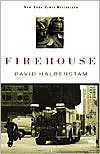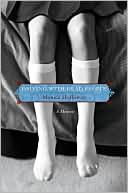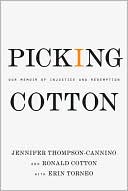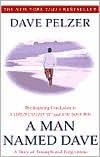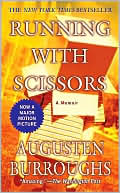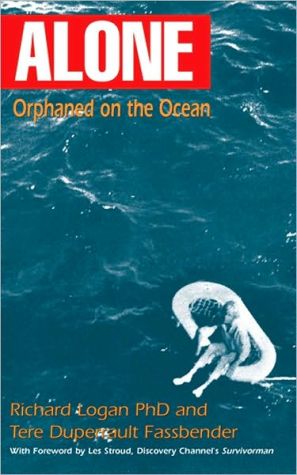Firehouse
“If you have tears, prepare to shed them.”\ —Frank McCourt\ "In the firehouse, the men not only live and eat with each other, they play sports together, go off to drink together, help repair one another's houses, and, most important, share terrifying risks; their loyalties to each other must, by the demands of the dangers they face, be instinctive and absolute."\ So writes David Halberstam, one of America’s most distinguished reporters and historians, in this stunning New York Times...
Search in google:
"In the firehouse the men not only live and eat with each other, they play sports together, go off to drink together, help repair one another's houses and, most importantly, share terrifying risks; their loyalties to each other must, by the demands of the dangers they face, be instinctive and absolute." So writes David Halberstam, one of America's most distinguished reporters and historians in this stunning book about Engine 40, Ladder 35 - one of the firehouses hardest hit in the aftermath of the terrorist attack on the World Trade Towers. On the morning of September 11, 2001, two rigs carrying 13 men set out from this firehouse, located on the west side of Manhattan near Lincoln Center; twelve of the men would never return. Firehouse takes us to the very epicenter of the tragedy. We watch the day unfold, the men called to duty, while their families wait anxiously for news of them. In addition we come to understand the culture of the firehouse itself, why gifted men do this and why in so many instances they are anxious to follow in their fathers' footsteps and serve in so dangerous a profession - why more than anything else, it is not just a job, but a calling as well. Firehouse is journalism-as-history at its best. The story of what happens when one small institution gets caught in apocalyptic day, it is a book that will move readers as few others have in our time. Bookpage [Halberstam's] special contribution is to anatomize the culture that incubated and nourished these remarkable public servants.
FIREHOUSE\ \ \ By David Halberstam\ \ HYPERION\ Copyright © 2002 David Halberstam.\ All rights reserved.\ ISBN: 1401300057\ \ \ \ \ Chapter One\ \ \ The Upper West Side of Manhattan, just above Columbus Circle, was until quite recently a relatively poor neighborhood, and some of the veteran firemen at Engine 40, Ladder 35, located at Sixty-sixth Street and Amsterdam Avenue, like to recall how Amsterdam was once the dividing line between an Irish neighborhood to the east and a black neighborhood, just to the west. The black neighborhood used to be known as San Juan Hill, some say in honor of the black soldiers who moved there after the Spanish-American War, or perhaps because of the frequent, bloody street fights that occurred between the Irish and black kids early in the century, or finally because some of the city's earliest Puerto Rican settlers lived there. But after World War II, as the city became ever more affluent, as every piece of real estate in Manhattan became more and more valuable, the neighborhood began to change. The tenements that had housed the poor, where bookies haunted the hallways and homing pigeons were sometimes still kept on the roofs, and the cheap single-room occupancy (SRO) hotels, in which rooms rented for five dollars a night, began to disappear, to be replaced by solidly middle-class apartment buildings. The process accelerated in 1959 with the groundbreaking for Lincoln Center, a vast new cultural complex that would house the Metropolitan Opera, the New York City Ballet, the New York Philharmonic, and the Juilliard School.\ In the early 1960s skyscrapers began to sprout into the sky like giant steel-and-glass fingers. What had before been barely a blue-collar neighborhood became not merely middle class, but in time, upper-middle class. The firemen and cops who worked the area, many of whose families lived in the neighborhood and in other working-class sections of Manhattan, were caught in this relentless process of economic and social change, and they began to move, first to the boroughs—Queens, Brooklyn, and Staten Island—and then, in the last twenty years, to the satellite commuter communities surrounding New York City, on Long Island, and north of the city in Rockland County, New York, and in New Jersey.\ \ \ The firehouse of Engine 40, Ladder 35, that stands guard over this ever more affluent neighborhood was originally built in 1961. It was a pleasant if not very fancy building, spacious with enough of a yard in back for the men to play basketball and for them to sit outside and barbecue food on hot summer nights. But in the 1980s the air rights above the firehouse were sold, and a sixty-story apartment house of the very kind that is a nightmare for any New York fireman was erected, ironically enough, right on top of the firehouse. The men were forced out during the construction of the towering building, and from 1988 to 1994 they were housed in the tunnels under Lincoln Center on Amsterdam, at Sixty-third Street. It was not the most pleasant of temporary bases, being windowless and dank, and there were in time numerous jokes about the fact that any children conceived by the men during this period might end up looking like moles. The men began to refer to themselves as the Cavemen, which eventually became the company's nickname, and since, much like military units, firehouses often have patches designating their units, the patch for 40/35 featured two Cavemen—a couple of firefighters looking as if they had recently escaped from a Flintstones cartoon.\ The renovated station house, when it was finally completed, turned out to be quite ordinary, gray and functional, easy to pass by without gaining a second look. It gave off none of the wonderful aura of a classic firehouse. When the men moved back, they also discovered that it had been reconfigured, regrettably, to significantly smaller specifications. Everything felt tighter and more constricted. The backyard that had given them such pleasure was gone. The kitchen, so important in any firehouse as the center of social life, was now unacceptably small; there was one good-sized room where the men were to eat, but it was hemmed in by two much smaller rooms, one in which food was to be stored and prepared and the dishes washed, the other simply a storage room. The architect, the men grumbled, had not known a damn thing about being a fireman or how firemen lived. Over time there was considerable talk about breaking down the walls and making all three rooms into one larger one. But doing that—changing the architect's plans—would have meant fighting through an immense amount of red tape, at the very least.\ Although there were many opinions about what to do, there was almost no opposition to the idea of one larger room. So one weekend Bruce Gary, a chauffeur on the engine (that is a driver of Engine 40, a crucial role in the firehouse), a man who by dint of his awesome physical strength and equally formidable personal integrity was an imposing figure within the station's political and social order, decided that the debate about whether or not to expand had gone on for long enough. Even though they were supposed to consult with the department on matters such as building alterations, the time had come to act unilaterally, he believed. So Gary simply took a sledgehammer and started knocking down the offending walls.\ That day Jim Gormley, who at the time was a lieutenant in the house, wandered into the building and was told by another lieutenant, Pete Gorman, just to go to his office because he did not want to know what was going on—which, of course, he did not. As Bruce Gary was finishing his demolition, he was approached by one of his younger colleagues who informed him that he could not do what he was doing. "Can't do it?" Gary repeated in disbelief. "What the hell do you mean I can't do it—I just did it." That ended the debate; not many people wanted to challenge Bruce Gary—on something like this anyway.\ \ \ Firemen live in a world apart from other civilians. The rest of the world seems to change, but the firehouses do not. This is, in fact, as close to a hermetically sealed world as you are likely to find in contemporary America: It is driven by its unique needs, norms, and traditions, some of which are inviolable. The New York Fire Department is largely male—women have in recent years become firefighters, but that has happened slowly, and many houses have remained all-male, including 40/35—and largely white, and it is to an uncommon degree composed of men who come from firefighting families, men who, like their fathers before them, have wanted to be firemen since childhood.\ A great deal of the tradition and the coherence is family-driven, with generation after generation supplying men to the department. It is almost as if there is a certain DNA strand found in firefighting families, where the men are pulled toward the job because their fathers and uncles were firemen and had loved it, and because some of their happiest moments when they were boys had come when they visited the firehouse and these big, gruff men made a fuss over them. The job and the mission and the sense of purpose that go with it have always been quietly blended into the family fabric. "It's passed on father to son, and sometimes grandfather to father to son," says the Reverend Robert Scholz, who is the pastor of a Lutheran church located about three blocks from the 40/35 firehouse and who knows the men well. "You see your father doing it, and you're proud of him. His life seems honorable and purposeful, and you see the richness of his friendships and the loyalty of these men to each other, and how, when you're young, the other firemen seem like additional uncles. And it seems so honorable."\ All of this makes the department's hold on the men quite striking in an age when the lure of material and other ego rewards is so powerful. The hold the New York Fire Department has on the young men of the city and its environs is as strong as ever. The waiting list to get into the department is long, so long that many young men who want to be firemen start as cops and transfer to the fire department when their numbers finally come up. Yet the pay is marginal. According to one department veteran, a young married fireman with four children and a wife who doesn't work makes so little that he is technically eligible for food stamps. Almost all of the men at 40/35 could double their pay in other jobs.\ Terry Holden, who has been at 40/35 since 1964 and who has seen the personnel turn over more than once, says of the unusual sense of continuity: "It's completely different from when I first came here. There's not a single person left from back then. And the country and the city are very different, and yet the house in most important ways is exactly the same—even though it's a completely different generation from a very different era. It's as if we've been cloned. Part of it is that the talent pool is so similar—we come from the same places, the same kind of families, sometimes even the same parochial schools, and we have the same values. And we still have the same purpose, though we don't like to talk about it openly. But we like it when we get back to the firehouse after a fire and someone says you did a good job. Especially when you tell that to the junior men."\ A firehouse, most firemen believe, is like a vast extended second family—rich, warm, joyous, and supportive, but on occasion quite edgy as well, with all the inevitable tensions brought on by so many forceful men living so closely together over so long a period of time. What gradually emerges is surprisingly nuanced; the cumulative human texture has slowly evolved over time and is often delicate. It is created out of hundreds of unseen, unknown, and often unidentified tiny adjustments that these strong, willful men make to accommodate one another, sometimes agreeably and sometimes grudgingly. It incorporates how the men live with one another day in and day out, and surprisingly the degree to which, whether they realize it or not, they come to love one another (sometimes even as they dislike one another)—because love is a critical ingredient in the fireman's code, which demands that you are willing to risk your life for your firehouse brothers.\ The men not only live and eat with one another, they play sports together, go off to drink together, help repair one another's houses, and, most important, share terrifying risks; their loyalties to one another, by the demands of the dangers they face, must be instinctive and absolute. Thus are firehouse codes fashioned. When a probie—a probationary or apprentice fire fighter—joins a firehouse, he must adjust to the firehouse culture, rather than the firehouse adjusting to him. It is like the military in that respect: Idiosyncrasy can come later; adherence to the rules and traditions comes first.\ Reverend Scholz long ago decided that there was something special to firemen and their traditions, that they had chosen this profession because it expanded their lives and gave those lives additional meaning. Many of the men, he said, were not necessarily angels or saintly—far from it, in fact—and they were not, in the traditional sense, necessarily very religious. But there was also a certain spiritual redemption to what they did. They could be on occasion rowdy and combative and they had their allotted share of human flaws, of which they themselves were often all too aware. But whatever they had done wrong the night before, the next morning when they were at the firehouse, they were able to take extra meaning from their lives, and to find some form of redemption because of the nature of the job, because of the risks they take for complete strangers.\ Scholz believed that outsiders would never be able to understand who these men were and what they did unless they understood the job for what it is—nothing less than a calling. Jim Gormley, now captain of Engine 40, completely agreed. "We all have our daily conversation with God" Gormley once said. "Do we do what we do for God? No. But it's there, the religious part, just the same. We do it for people. We do it for the sense of rightness. And we like doing it, like the life because we're never ashamed of what we do."\ The men are loath to talk about the daily risks, even with their wives. "People think they know what we do, but they don't really know what we do," says 40/35 veteran Ray Pfeifer of the real danger, of being in a burning building when there is a collapse and the exits seem blocked. It is not unusual for a firehouse to lose a man to a fire periodically. And there are those awful times, graven in everyone's minds, when there is a truly devastating fire, when the Fates are more powerful than all the skills and resources of the firefighters. This happened in Astoria, Queens, on Father's Day 2001, when a fire broke out in a hardware store, cans of paint and chemicals exploded, and three men died.\ All firemen in all firehouses tend to think that theirs is the best of all firehouses, a chosen place, one with the highest sense of duty, with the toughest mission, and the greatest sense of élan, but it is true that the men of 40/35, located as they are in midtown Manhattan, feel this even more passionately than most. It is considered an unusually strong house, filled with veterans who do not want to transfer out. Content to remain firemen, they often do not want to take the exam to become officers. This is not just because they like being firemen and like passing on their unique traditions to the younger men, but also because they love this particular house; if they became officers, they would have to go elsewhere. As such, 40/35 has an unusually high sense of cohesion and loyalty. When a young fireman named Kevin Shea did so well during his three years of rotating among firehouses that he was allowed to choose his house, he did a good deal of checking around and was told by a number of senior people to try 40/35. "It's the hidden jewel in Manhattan," Captain Gary Ruiz, a battalion chief told him, recalling that his seven years there, before he had been promoted, were among his happiest as a fireman.\ About fifty men work at 40/35 in shifts, eleven at any given time. Eight of the men are officers—two captains and six lieutenants. The house contains both engine and ladder (or truck—when the firehouse terminology is written out, it is Engine 40 and Ladder 35; when it is spoken among the firemen, it is always 40 Engine and 35 Truck). By tradition and assigned role, it is the truck that finds the fire in a given building, and whose men search for any survivors and get them out of the building; the men on the engine pump the water, attack the fire, and finally put it out. The rivalry between truck and engine and the competition over whose role is more important and who are the real firemen are constant, and given the raucous nature of firehouse humor (if firefighting was easy, goes the joke, the cops would do it), sharply edged. The engine men like to refer to the truckees as firemen's helpers. Once a year the firehouse has Medal Day, and, the engine men say, most of the medals are inevitably bestowed upon truckees because they are the ones who do most of the rescuing. "Privately we call it Truck Appreciation Day," says Pfeifer, a 40 Engine guy. "We feel they really deserve the medals because we're so busy putting out the fires and having all the real fun, so they ought to get something to compensate."\ The truckees say that all engine men are terrible cooks, that the engines get lost all the time, and cannot find a fire without the help of the truck. Because of that, they can never go anywhere alone. Besides, the truckees note, since the engine men have to get down low to fight a fire, sometimes crawling once they're inside a building to get under the heat, all engine men are short and stubby. To which counters Pfeifer, firemen are selected for their different roles—engine or truck—when they're still at the academy. "The doctor comes in with a stethoscope and he checks out the young fireman's heartbeat, and if it's strong, a real thump-thump-thump, then you go to the engine. But if it's fainter, something of a pitter-patter, then it's to the truck."\ (Continues...) \ \ \ Excerpted from FIREHOUSE by David Halberstam. Copyright © 2002 by David Halberstam. Excerpted by permission. All rights reserved. No part of this excerpt may be reproduced or reprinted without permission in writing from the publisher. \ \ \ \
\ From Barnes & NobleAcclaimed historian David Halberstam takes a look at the brave firefighters who operate out of the Engine 40, Ladder 35 firehouse in his Manhattan neighborhood. How did the terrible -- and heroic -- events of September 11, 2001, affect those who answered the call for help? Halberstam brings the reader right into the action as only he can.\ \ \ \ \ OnionIt re-forms and endures.\ \ \ Bookpage[Halberstam's] special contribution is to anatomize the culture that incubated and nourished these remarkable public servants.\ \ \ \ \ NewsweekHalberstam writes in this always clear-eyed but affecting group portrait.\ \ \ \ \ James TraubGraceful and moving. \ —New York Times Book Review\ \ \ \ \ Bob MinzesheimerRichly detailed . . . in structure and tone, it resembles John Hersey's 1946 classic Hiroshima. \ —USA Today\ \ \ \ \ Malcolm JonesA clear-eyed but affecting group portrait. \ —Newsweek\ \ \ \ \ Joe HeimA poignant remembrance . . . Halberstam's achievement is remembering these men not just for how they died . . . for how they lived. \ —People\ \ \ \ \ Peter LewisFirehouse leaves one feeling . . . personally touched . . . and grateful that there are ordinary people who possess such uncommon courage. \ —San Francisco Chronicle\ \ \ \ \ Publishers WeeklyHalberstam's gripping chronicle of a company of Manhattan firemen on September 11 is moving without ever becoming grossly sentimental an impressive achievement, though readers have come to expect as much from the veteran historian and journalist (author, most recently, of War in a Time of Peace). Engine 40, Ladder 35, a firehouse near Lincoln Center, sent 13 men to the World Trade Center, 12 of whom died. Through interviews with surviving colleagues and family members, Halberstam pieces together the day's events and offers portraits of the men who perished from rookie Mike D'Auria, a former chef who liked to read about Native American culture, to Captain Frank Callahan, greatly respected by the men for his dedication and exacting standards, even if he was rather distant and laconic (when someone performed badly at a fire he would call them into his office and simply give him "The Look," a long, excruciating stare: "Nothing needed to be said the offender was supposed to know exactly how he had transgressed, and he always did"). The book also reveals much about firehouse culture the staunch code of ethics, the good-natured teasing, the men's loyalty to each other in matters large and small (one widow recalls that when she and her husband were planning home renovations, his colleagues somehow found out and showed up unasked to help, finishing the job in record time). Though he doesn't go into much detail about the technical challenges facing the fire department that day, Halberstam does convey the sheer chaos at the site and, above all, the immensity of the loss for fellow firefighters. (May 29) Copyright 2002 Cahners Business Information.\ \ \ \ \ KLIATTIn the developing bibliography of titles on 9/11, David Halberstam has crafted a poignant, journalistic tale about the experiences of Engine 40, Ladder 35, from the West Side of Manhattan. In a direct, concise style, the reader is intimately treated to the heart and soul of this unit, which lost 12 out of 13 firefighters. We meet the individuals, we understand their devotion to their work, and we contemplate the grave danger that they face each time their trucks race to a fire. The details of the morning of September 11th are familiar, but the personal stories humanize the trauma and loss. The aftermath of searching Ground Zero, the funeral services and the strength of the firefighters' families are a tribute to America. This slim, powerful volume should be required reading for incoming high school students. KLIATT Codes: JSA*; Exceptional book, recommended for junior and senior high school students, advanced students, and adults. 2002, Hyperion, 201p., \ — Nancy Zachary\ \ \ \ \ Library JournalThe phrase "read it and weep" carries a flip connotation, but those who pick up this book will literally read it and weep. Pulitzer Prize winner Halberstam spent over two and a half months, beginning last October, at the Engine 40, Ladder 35 firehouse, located on Manhattan's West Side. On the morning of September 11 two rigs from that house had responded to the World Trade Center attack; 13 men went out, and one came back alive. Here, the author offers us short, personal looks at these men, with details provided by brother firefighters, spouses, family, and friends, and we see how 9/11 made its awful mark on the dozen who perished, those they left behind, and the one who survived. Ex-firefighter Dennis Smith's recent Report from Ground Zero paints a much broader and, owing to his background, more personal picture of the disaster, but if he captures its mind-boggling enormity Halberstam succeeds as well at emphasizing the individual grief it caused by focusing narrowly on just his 13 men. Recommended for all libraries. Jim Burns, Jacksonville P.L., FL Copyright 2002 Cahners Business Information.\ \ \ \ \ Kirkus ReviewsPeeled emotional energy characterizes this portrait by Halberstam (War in a Time of Peace) of a firehouse that lost 12 of 13 men in the initial response to the World Trade Center attack. It's a difficult story to tell from almost every angle. The notoriously insular firefighting community doesn't accept strangers in its midst, let alone confide in an outsider, and most of the subjects are dead. Halberstam is striving to achieve sympathetic yet realistic characterizations of men he never met, most of whom were very young. So it's quite an achievement that the author manages to get into the soul of Engine 40, Ladder 35, to give a glimpse of what it meant for these men to be firefighters. He nails the pride and purposefulness with which firefighters view their work, and how that sense of mission and honor melded the house into a family-a word that is not a metaphor here, since more than once the author informs us that someone was "a fireman's son and a fireman's grandson," with brothers and cousins thrown into the act. The profession's unique requirements, norms, and traditions seem to have passed through the generations like some DNA-driven imperative to create firefighters' preternatural calm, their selflessness, and their simple, extraordinary willingness to troop straight into danger while others are streaming away from it. Although the firehouse is a raw, exposed environment ("everyone knows everything about everyone, and therefore nothing can be faked"), it's not easy to draw out these men to speak of their dead comrades. Understandably, some portraits are more rounded than others, but only a few are pastiches of impressions that fail to jell. More often, the descriptionsclick, Halberstam succeeds in bringing his subjects back to life, and we ache as we suddenly remember that this man is no more. Fine work that will leave most readers with even higher esteem for firefighters.\ \
